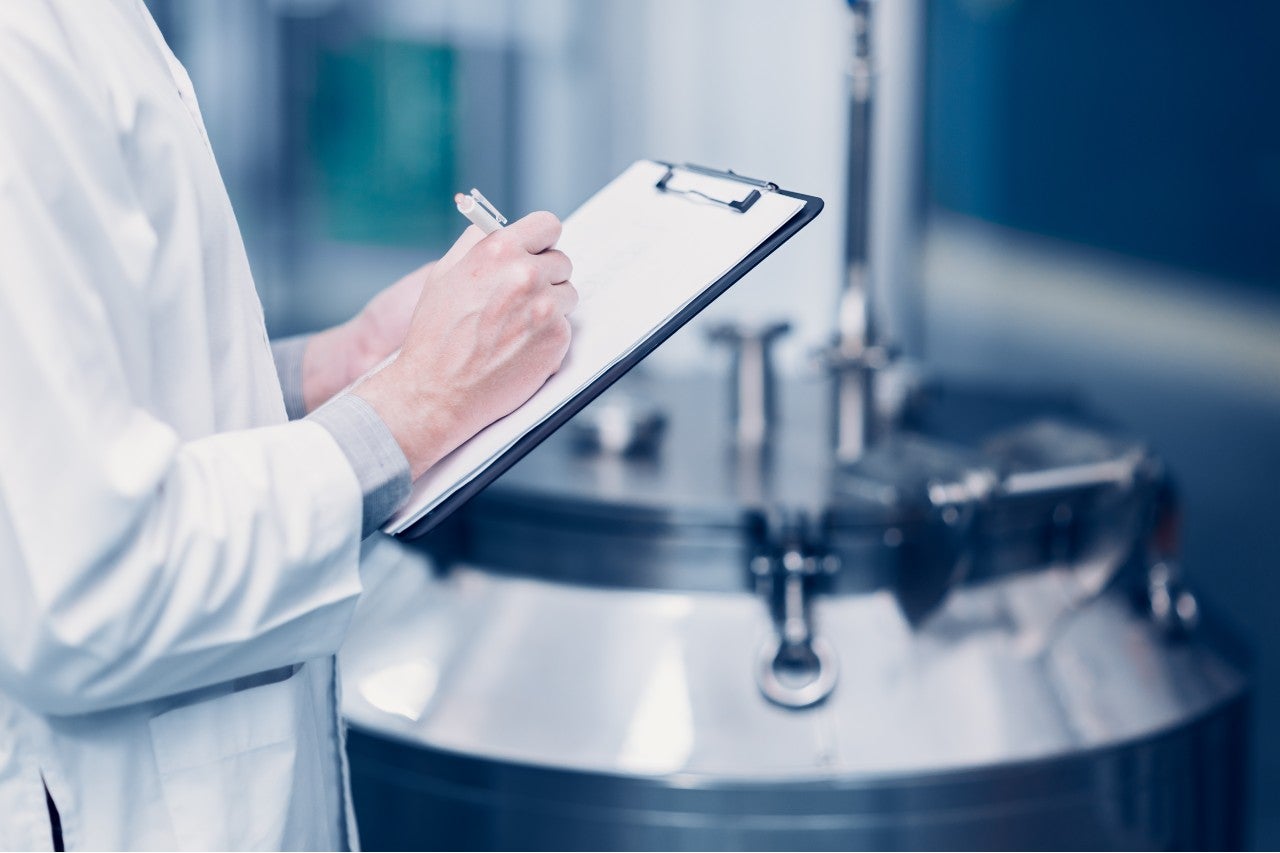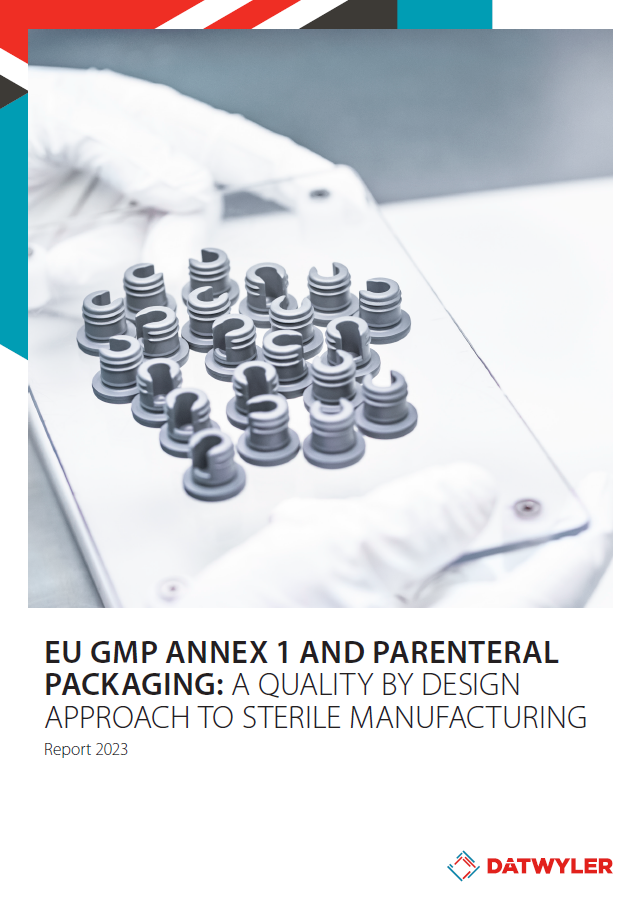
A wide range of physical and chemical sterilisation options are available to drug manufacturers. In this article, we evaluate five of the most common ones used for parenteral packaging components.
1. Steam
The use of saturated steam has been a widely accepted sterilisation technique in the pharma and medical device industry for many years, as it has no measurable effect on the chemical and physical properties of components made from glass, aluminium, elastomers and polypropylene.
Materials are exposed to a temperature of 121°C with cycle times often lasting 30 minutes to one hour depending on the material, resistance of organisms and validation method used. The heat denatures the proteins of the microorganisms, leading to the killing off of the organism. For the overkill method, Geobacillus stearothermophilus is used as a reference organism because it is the most thermally resistant spore.
For porous and hard materials, the prevacuum method can be used. This is where air is removed from the packaging through vacuum pulses to ensure better heat transfer by saturated steam. For liquids, the use of air overpressure is more suitable to avoid overpressure in the packaging, using a steam/air mixture or superheated water. Depending on the most suitable and preferred method, the cycle time can be longer or shorter.
The residual moisture of the packaging components after steam sterilisation is important to keep in mind, especially when used for moisture-sensitive drug products, such as those that will undergo lyophilization. A suitable drying cycle must be used, taking into account the impact of dry heat on the products. It is also important that the steam will be able to reach the complete surface of the products to ensure the killing off of the microorganisms.
2. Gamma
During gamma radiation, ionizing radiation from Cobalt-60 causes damage to the DNA and RNA of microorganisms. Gamma rays have a high penetration ability and the dosage is expressed in kGy (kilogray). The dosage – typically between 10-40kGy – a product receives depends on the amount of time it spends in the bunker next to the source of irradiation. The amount of time needed to acquire the correct dose depends mainly on the density of the load.
This method of irradiation does not render products radioactive, making them perfectly safe for patients.
According to Anneleen Lodewijks, global process engineer for sterilisation at Datwyler, gamma is suitable for all commonly used parenteral packaging materials,with the exception of glass due to discoloration, as long as the appropriate doses are used. Due to the possibility of bulk sterilisation, it is a quick and efficient process, and many secondary packaging materials and configurations are possible.
There are some other factors to keep in mind, too. “Irradiation does have an effect on the chemical and physical properties of certain materials,” says Lodewijks. “Elastomers can become brittle and show fragmentation under an irradiation dose that is too high. The same goes for certain types of plastics, like polypropylene. This is the reason why certain Datwyler products containing polypropylene are sterilised with a maximum dose of 28 kilogray (kGy), rather than 40kGy.”
3. X-ray
X-ray sterilisation is very similar to gamma, using a dose of 10–40kGy of X-rays to sterilise products through ionizing irradiation. While this method is suitable for the same range of components as gamma, its use for parenteral packaging components is still under development, with strong potential for Datwyler to introduce X-ray sterilisation in the future depending on facility developments and customer demands.
There are some expected advantages to be gained with X-ray. As the radiation comes from a generator rather than a gamma-source, improved targeting of the irradiation can be achieved. Unlike gamma, the source can be turned on and off, or adjusted, making it possible to sterilise batches of different densities directly after one another with the most appropriate dose. Higher stacking patterns and shorter exposure times may also be possible.
Considerations include cost, which is highly dependent on energy prices, and the heat sensitivity of the products, as X-rays generate heat faster than gamma. Environmental impact should also be considered.
“Cobalt-59 is mined and the resource is not infinite. When we look at the environmental impact, Cobalt-60 is created using the byproducts of nuclear plants. After it has decayed too much for use at sterilisation facilities, it is still used for other purposes and afterwards is stored until the waste is no longer radioactive,” notes Lodewijks. “Overall, gamma sterilisation on its own creates a minimal amount of waste (electricity, CO2). X-ray doesn’t require Cobalt but it does require a lot of energy. The two methods therefore impact the environment in different ways.”
4. Ethylene oxide
Ethylene oxide (EtO) is a colourless, toxic, carcinogenic and reactive gas that is used in sterilisation to prevent the replication of microorganisms through alkylation. As EtO is fully soluble in water, the process depends on a few important parameters: time, gas concentration, temperature (EtO becomes a gas in the general atmosphere) and humidity.
There are three stages in the EtO process. First is pre-conditioning, where the load is heated for 10–24 hours at temperatures of 35–50°C and humidities of 40–80%. During the second phase, the sterilisation chamber is flushed, humidified and injected with EtO for 8 to 16 hours at temperatures of 40–60°C. The process ends with aeration, where the desorption of EtO is achieved over a period of one to seven days.
Lodewijks says: “EtO is typically used to pre-sterilise empty prefilled-syringe systems. It can be a good solution for products that are sensitive to heat, moisture or radiation. It is highly effective at low temperatures. It is important that the gas can penetrate the product you wish to sterilise. Therefore, it is only suitable for unsaturated elastomers, where it can pass through and sterilise the fluid path.”
There are many options when designing an EtO process. Deep-vacuum cycles are common, and the addition of a nitrogen flush to drive EtO out of the container’s headspace is one potential for improving processing times. Although less efficient, a shallow vacuum is possible for vacuum-sensitive products. Companies can also choose between an overkill or bioburden approach to process design. The overkill method, where the level of sterilisation goes beyond the microbial challenge, is simpler to set up but is harsher on materials and has a subsequent impact on cycle time.
5. Chlorine dioxide
Chlorine dioxide (ClO2) is an oxidizing agent, which works by destroying the bonds of a microorganism’s cell membrane, DNA and RNA, thus causing the rapid destruction of bacteria. ClO2 is a yellow-green, non-toxic, non-carcinogenic and non-explosive gas. It is a close alternative to EtO, being affected by many of the same parameters – time, gas concentration and humidity – but it is not yet a well-established method of sterilisation, despite having many safety-related advantages.
While cycle times are much shorter, ClO2 sterilisation involves the same three stages as EtO: pre-conditioning, sterilisation with ClO2 and nitrogen, and aeration. When it comes to product compatibility, Lodewijks says it is suitable for the same products as for EtO, although since ClO2 is still being examined as a new possible method, it is strongly recommended to test your products for any effects.
“Of course, the big difference between EtO and ClO2 is that you have no residues within the products,” she adds.
“The equipment is also very similar to the EtO steriliser, and it might even be possible to adjust your EtO steriliser to a ClO2 steriliser,” says Lodewijks. “There are several autoclaves available in different sizes. Chlorine dioxide is much safer than EtO, and therefore it would be easier to implement it in-house. In-house sterilisation on packaging level, instead of box-level, can decrease the cycle time.”
Ready to sterilise or ready to use?
Datwyler is one of the world’s leading manufacturers of system-critical elastomer components for parenteral packaging closures, such as stoppers and plungers.
The company’s offering includes ready-to-use (RTU) solutions that have been washed and sterilised using validated processes and packed in standard polyethylene/ethylene-vinyl alcohol packaging or rapid-transfer port bags.
RTU solutions enable customers to redirect resources to their core business while simplifying stock management. They may also reduce risks and labour costs while creating faster lead times, making products ready for immediate use in aseptic fill-and-finish operations.
Alternatively, customers can purchase products in bulk or in a pre-washed, ready-for-sterilisation format.
While considerations on radiation dose or gas concentration are important, Datwyler’s elastomeric closures are compatible with all standard sterilisation methods on the market. This flexible offering means customers of all sizes and business requirements can find the sealing solution they need from Datwyler.



